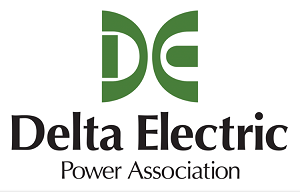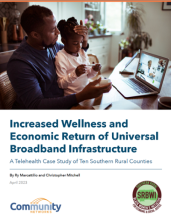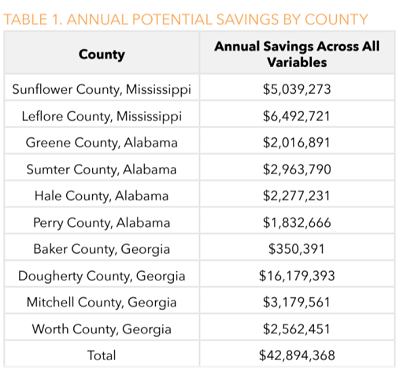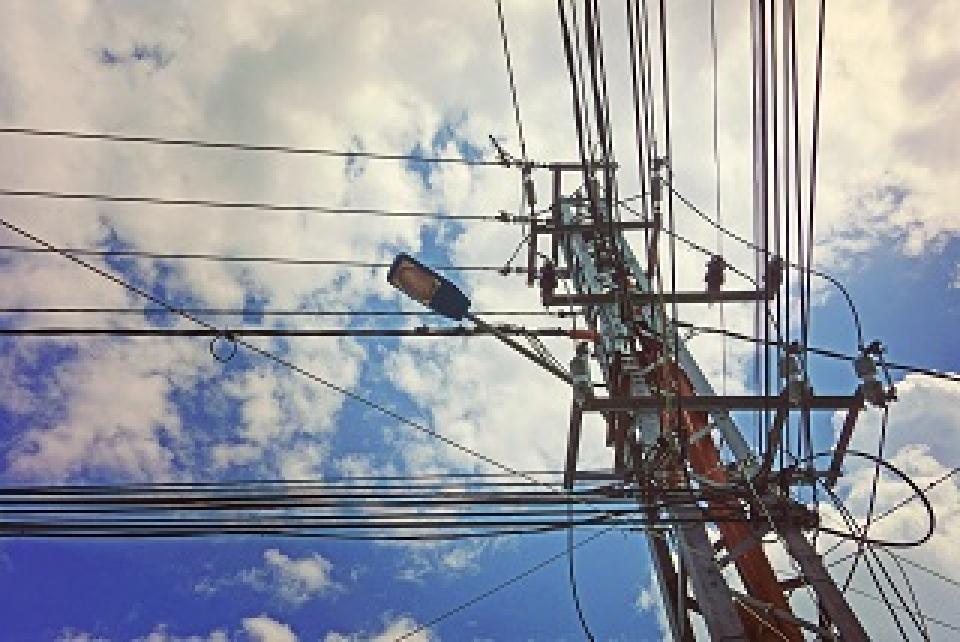
Fast, affordable Internet access for all.

The establishment of a new broadband office in Mississippi heralds a new era in the state’s efforts to bring high quality broadband to all its residents, especially those living in the most rural parts of the state.
On the forefront of that effort is the Delta Electric Power Association, an electric cooperative currently building out fiber infrastructure in the Mississippi Delta region – a mostly rural part of the state with a majority Black population and where about a quarter of residents do not have access to broadband of any kind.

As in other states with sizable rural areas, electric cooperatives are playing a major role in building out high-speed Internet infrastructure.
In Mississippi, Delta Electric, has a service area that covers ten counties in the northwestern part of the state, providing electricity for 4,235 industrial, 3,144 commercial, and 21,174 residential member-owners.
Now, the cooperative has set its sights set on bringing high-speed Internet service to its members, left behind by the big national providers who do not consider the region profitable enough to invest in.
Electric Cooperative Starts With CARE(S)
It started in 2020, when the electric cooperative was awarded a $4.9 million Coronavirus Aid, Relief, and Economic Security (CARES) Act grant for a fiber pilot serving Carroll County with gig speed connections.

In a new report, published in partnership with the Southern Rural Black Women’s Initiative (SRBWI), the Institute for Local Self-Reliance (ILSR) Community Broadband Networks Initiative examines the link between high-speed Internet infrastructure, access to healthcare, and the economic implications involved.
The report –“Increased Wellness and Economic Return of Universal Broadband Infrastructure: A Telehealth Case Study of Ten Southern Rural Counties” has particular relevance for those living in rural broadband deserts as it details how universal, affordable, broadband infrastructure would return $43 million per year using telehealth across 10 counties in the Black Belt of Alabama, Georgia, and Mississippi. Read Increased Wellness and Economic Return of Universal Broadband Infrastructure: A Telehealth Case Study of Ten Southern Rural Counties [pdf].
It explains how robust broadband infrastructure could pay for itself in short order and open up untold access to healthcare, educational opportunities, economic development, community engagement, and other benefits along the way. This issue is particularly relevant today, because the BEAD program represents a once-in-a-generation investment in broadband infrastructure, larger than any other federal grant program many times over. While it will solve the issue of access to infrastructure for most rural households, we have significant concerns about affordability - BEAD will lead to new connections, but states have wide latitude as to which ISPs get those funds to build new connections. The national monopolies have a long history of charging more to exactly the communities that can’t pay as much, leaving many households out. The report argues that electric cooperatives offer better and more locally accountable paths to universal, affordable service.
Drawing on academic scholarship and existing telehealth programs at hospitals around the country, the report focuses on an assortment of chronic health ailments plaguing those counties, such as diabetes, chronic respiratory disease (including asthma, chronic obstructive pulmonary disease, emphysema, heart disease, heart failure, cancer, obesity, and mental health and then demonstrates the benefits that could come from effective telehealth interventions for each
In partnership with the Southern Rural Black Women’s Initiative (SRBWI), today ILSR is releasing a new report that examines the link between high-speed Internet infrastructure, access to healthcare, and the economic implications involved.
The report – “Increased Wellness and Economic Return of Universal Broadband Infrastructure: A Telehealth Case Study of Ten Southern Rural Counties” – has particular relevance for those living in rural broadband deserts as it details how universal, affordable, broadband infrastructure would return $43 million per year using telehealth across 10 counties in the Black Belt of Alabama, Georgia, and Mississippi.
At a virtual press briefing today, SRBWI leaders and organizers were joined by Dr. Sandra B. Reed of Emory Healthcare; as well as ILSR Senior Researcher and the report’s lead author, Ry Marcattilio, to explain how robust broadband infrastructure could pay for itself in short order and open up untold access to healthcare, educational opportunities, economic development, community engagement, and other benefits along the way.

“It’s easy to miss the connection, but hard to overlook what’s at stake as rural hospitals close and the cost of transportation to get to far-off healthcare facilities presents a real barrier. This is about access to healthcare and Black women being denied the opportunity to take advantage of telehealth. The broadband infrastructure that’s needed for that just isn’t there,” said Shirley Sherrod, SRBWI State Lead for Georgia and Director of the Southwest Georgia Project in Albany Georgia.
Broadband … to Access Longer, Healthier Lives
North East Mississippi Electric Power Association (NEMEPA) cooperatives celebrate another year of funding and progress toward building better broadband across nine service areas.
At a recent event, Northern District Public Service Commissioner Brandon Presley said: "We are going to be one of the most connected states in the United States of America in some of the most rural areas of America. It has been amazing to watch. This has been not just a top priority for me but also our co-ops."
Collectively, the NEMEPA cooperatives already offer broadband to over 84,000 members and expect to expand to over 182,000 members once the work is complete.
Nine NorthEast Power Cooperatives Bringing Fiber to Rural Residents
The NEMEPA expansion took off when the cooperatives were awarded (Rural Digital Opportunity Fund) RDOF grants to extend existing fiber networks or build new ones for their members.
Each district received a share:
Over the past eighteen months, southeastern-Mississippi based Dixie Electric Power Association (Dixie EPA) has gone from presenting its initial buildout plans for a fiber-to-the-home (FTTH) network, all the way to connecting its 5,000th subscriber. Because of electric cooperatives like Dixie that are getting organized and prioritizing connectivity for their members, Mississippi is likely to become one of the states with the best rural connectivity within the next five years.
Founded in 1938 in Laurel, Mississippi, Dixie EPA’s present-day coverage area stretches across southeastern Mississippi in parts of Covington, Jasper, Jones, Clarke, Wayne, Perry, and Forrest counties. The cooperative provides electric service to 30,000 premises.
In September 2020, about six months into the COVID-19 pandemic, Dixie began pre-registering subscribers for Internet service under the cooperative’s newly-created subsidiary, DE Fastlink. Dixie was part of a collective of electric cooperatives that had just received a recent state appropriation of $65 million in CARES Act funding for rural broadband deployment. The funding was administered under the Mississippi Electric Coop Broadband Covid Grant Program by Mississippi Public Utilities. Dixie planned to match in full its own $3.3 million award, which, according to the terms of the grant, had to be spent by the end of that year.
In an effort to connect rural communities in eastern Mississippi where the big monopoly Internet Service Providers (ISPs) have failed to deliver– Mississippi Power has agreed to lease its dark fiber to East Mississippi Connect (EMC), the telecommunications subsidiary of the East Mississippi Electric Power Association (EMEPA). The immediate goal is to bring high-speed Internet connectivity to underserved areas in Lauderdale (pop. 74,000) and Kemper (pop. 9,700) counties.
In February, EMC received $38.6 million in Rural Digital Opportunity Funds (RDOF) grants to deploy fiber-to-the-home broadband to rural residents in the eastern part of the state. EMC, approved by EMEPA members and established in October 2020, has been building out the network in phases, with the majority of Phase One – which covers parts of Lauderdale, Kemper and Clark counties – complete, or near completion. There are a total of five phases that will eventually reach into 11 counties and connect 37,000 homes and businesses.
The deal marks the first time Mississippi Power has agreed to lease its dark fiber – a move that was buoyed by a recently passed state law that allows electric utilities to “permit broadband providers use of the electric delivery system.”
EMC has two pricing and speed tiers: 100 Megabit per second symmetrical for $70/month and 1 Gigabit per second for $100/month.
“We are excited to be partnering with Mississippi Power to expand our opportunity of reaching an even greater number of rural communities with access to high-speed fiber Internet,” East Mississippi Electric Power Association Chief Executive Officer Randy Carroll said in a joint press release.
In September, we wrote about the elimination of significant state barriers in Arkansas and Washington as legislators at the state level pushed to overturn the laws protecting monopoly providers which prevent localities from building and operating their own broadband infrastructure.
The result of those moves is that the number of states which maintain barriers to community-owned networks fell to 17, heralding significant progress for the future.
The same week, Coalition for Local Internet Choice (CLIC) President Jim Baller testified before the Missouri House of Representatives' Interim Broadband Development Committee to address the state of preemption across the U.S. There, he argued that the "Missouri Legislature should follow the lead of Arkansas and Washington State and repeal the restrictions in R.S.Mo. § 392.410, once and for all. It should also reject any proposed new restrictions on municipal, cooperative, or public-private broadband projects."
During the course of his remarks he makes a powerful case against "state barriers to municipal, cooperative, or public-private broadband initiatives":
[The] are not only bad for the communities involved, but they also hurt the private sector in multiple ways. They prevent private companies from making timely sales of equipment and services to municipal or cooperative networks. They impede companies from using advanced public or cooperative networks to offer businesses and residential customers an endless array of modern products and services. They thwart economic and educational opportunities that can contribute to a skilled workforce that would benefit existing and new businesses across the state. They also deny the community the economic and social benefits from which everyone in the community can benefit, including the private sector.
He continues:
As the Biden administration fleshes out the details on the President’s proposed American Jobs Plan, which includes as much as $100 billion to fund expanded high-speed Internet connectivity and bring much needed competition to the broadband market, opponents (mostly Congressional Republicans and lobbyists for the big telecom companies) are tossing the word “overbuilding” around, ostensibly as a warning against wasteful government spending.
Case in point: U.S. Sen. Roger Wicker of Mississippi, the ranking Republican on the Commerce, Science & Transportation Committee recently told Bloomberg News, “The president’s broadband proposal opens the door for duplication and overbuilding.”
Meanwhile, many of his constituents in his home state point to how broadband infrastructure has actually been underbuilt by incumbent providers, leaving the Magnolia State and its broadband hungry residents in the digital dust.
Ideology vs. Reality
“For a poor state like Mississippi, being left behind by a 21st century economy is tantamount to economic death. Senator Wicker's concern about overbuilding and duplication is certainly not the case for the families and small businesses he represents across broad areas of this rural state in economic distress,” is how Oleta Garrett Fitzgerald, Children's Defense Fund Southern Regional Director and head of the Southern Rural Black Women's Initiative, responded to Wicker’s assessment.
To put it mildly, she doesn’t feel that the state has adequate Internet access networks today.
States have gotten creative over the last half year in making use of CARES Act funding to improve connectivity for families and students, but one project in Mississippi shows that oftentimes a good old Fiber-to-the-Home (FTTH) build is best. The West Jasper School District (enrollment 1,700), sixty miles southeast of Jackson, partnered with telephone and network operator TEC to do just that with a project aimed at bringing Internet access to 125 families that do not have it in the area.
Reaching the Unconnected
The effort is funded by $390,000 in CARES funding via the Mississippi Pandemic Response Broadband Availability Act managed by the Mississippi Department of Education. The initiative was established by HB 1788, which aimed at “providing payments to eligible Mississippi public school districts, independent schools and Native American tribal school districts . . . as equitably and efficiently as possible after determining the unserved areas of the state . . . to increase or gain broadband access.” It passed both chambers unanimously in July, allocating $50 million for the effort.
Ten miles of new fiber were installed along County Road 12 to bring 135 previous unconnected homes online to TEC’s (a regional telephone and broadband company which offers services in Tennessee, Alabama, Louisiana, and Mississippi) network at the end of November. Current users connected to its fiber infrastructure can choose between symmetrical 250 Mbps, 500 Mbps, and gigabit tiers for $55/month, $65/month, and $80/month respectively.
School District Superintendent Warren Woodrow said of the project:
We felt like the best use of it would be to put fiber in the ground and to serve our students and our community.
As the nation’s eyes are riveted on the political divide in Georgia and the implications it has for the balance of power in the U.S. Senate, many state residents are also keeping an eye on the digital divide in the Peach State with an aim to expand broadband service to rural residents.
Georgia’s not-for-profit, member-owned electric membership cooperatives (EMCs) are promoting a new “Georgia Solution” to bring more broadband connectivity to the state’s rural regions.
That’s what the statewide trade association representing Georgia’s 41 electric cooperatives is calling its unique “roll out the red carpet” initiative as they hope to lure private Internet Service Providers (ISPs) to expand broadband service now that state lawmakers passed the Georgia Broadband Opportunity Act during the 2020 Georgia General Assembly.
The law, signed by Governor Brian Kemp in August, authorizes the Georgia Public Service Commission (PSC) to set “rates, terms, and conditions for pole attachments between communications service providers and electric membership corporations and their broadband affiliates.”
Filed on October 23 with the state’s PSC to consider for approval, the “Georgia Solution,” aims to entice private ISPs with two “generous and unprecedented offers” -- the “One Buck Deal” and the “Georgia One-Touch-Make-Ready Program.”

Two-Part “Georgia Solution”